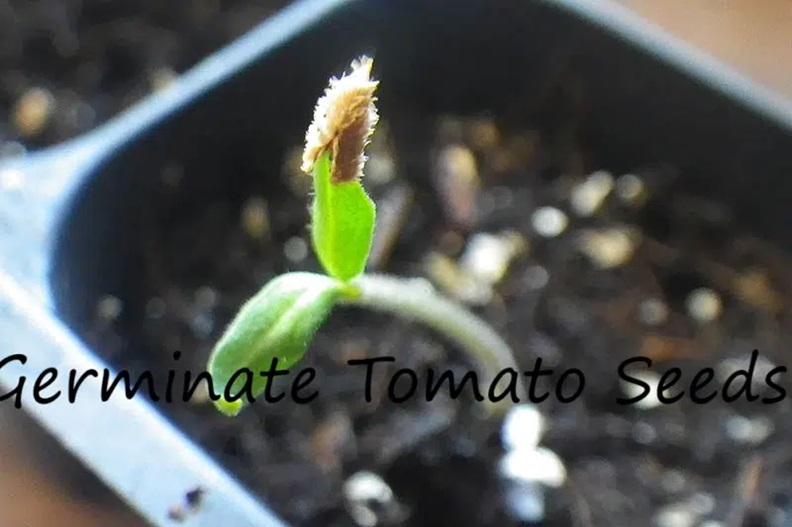How to Germinate Tomato Seeds Faster at home

Strong 8k brings an ultra-HD IPTV experience to your living room and your pocket.
Title: Quick Tips for Speeding Up Tomato Seed Germination at Home
Introduction:
Tomatoes are a beloved staple in many gardens, providing fresh flavor to countless dishes. However, waiting for tomato seeds to germinate can be a test of patience for even the most seasoned gardener. Fortunately, there are several techniques you can employ to accelerate the germination process and get your tomato plants off to a speedy start. In this article, we'll explore some tried-and-true methods for germinating tomato seeds faster right in the comfort of your home.
1. Start with High-Quality Seeds:
The first step to ensuring quick germination is to begin with high-quality tomato seeds. Opt for fresh seeds from a reputable supplier or save seeds from healthy, mature tomatoes grown in your own garden. Fresh seeds have a higher likelihood of germinating quickly compared to older seeds that may have lost their viability over time.
2. Use Warmth to Your Advantage:
Tomato seeds germinate best in warm soil temperatures, typically between 70-80°F (21-27°C). To create an optimal environment, place your seed trays or pots on a seedling heat mat. These mats provide consistent bottom heat, promoting faster and more uniform germination. Alternatively, you can position your seed containers in a warm spot in your home, such as near a sunny window or on top of a refrigerator.
3. Pre-Soak the Seeds:
Another effective technique to speed up germination is to pre-soak the tomato seeds before planting. Simply place the seeds in a shallow dish or cup of lukewarm water and allow them to soak for 12-24 hours. This process helps to soften the seed coat and kickstart the germination process, reducing the time it takes for the seeds to sprout once planted in soil.
4. Scarify the Seed Coats:
Some tomato seeds have tough outer coats that can inhibit germination. To overcome this barrier and expedite the process, consider scarifying the seed coats before planting. You can gently nick the seed coat with a small knife or rub the seeds between two sheets of fine-grit sandpaper. Be careful not to damage the embryo inside the seed while scarifying.
5. Provide Adequate Moisture:
Maintaining consistent moisture levels is crucial for successful seed germination. Keep the soil evenly moist, but not waterlogged, throughout the germination period. One effective method is to cover your seed trays or pots with a clear plastic dome or plastic wrap to create a mini greenhouse effect. This helps to retain moisture and create a humid environment conducive to germination.
6. Enhance Soil Drainage:
While adequate moisture is important, excessive water retention can lead to rotting seeds and fungal diseases. Ensure proper drainage in your seed-starting containers by using well-draining potting mix or adding perlite or vermiculite to improve soil structure. Good drainage encourages healthy root development and reduces the risk of damping-off, a common fungal disease that affects seedlings.
7. Optimize Light Exposure:
Although tomato seeds do not require light to germinate, providing adequate light once the seedlings emerge is essential for their growth and development. Place your seed trays or pots in a location with bright, indirect light or use supplemental grow lights to ensure your seedlings receive the light they need to thrive. Avoid placing them in direct sunlight, as this can cause excessive heat and drying of the soil.
8. Consider Seed Priming:
Seed priming is a technique that involves pre-treating seeds to improve their germination rate and speed. One method of seed priming involves soaking the seeds in a solution of water and a mild hydrogen peroxide solution for a short period before planting. This helps to disinfect the seeds and stimulate germination. Alternatively, you can use a commercial seed primer specifically designed to enhance germination.
9. Maintain Optimal Humidity:
In addition to providing adequate moisture, maintaining optimal humidity levels can further expedite tomato seed germination. If you're using a seed tray with a clear plastic dome or cover, periodically vent the cover to prevent excess humidity buildup, which can lead to fungal issues. A small desktop fan set on low can also help circulate air and reduce humidity around your seedlings.
Conclusion:
By implementing these strategies, you can significantly shorten the time it takes for tomato seeds to germinate and get a head start on the growing season. Whether you're a novice gardener or a seasoned pro, these tips will help you enjoy a bountiful harvest of delicious homegrown tomatoes in no time. Happy gardening!
Note: IndiBlogHub features both user-submitted and editorial content. We do not verify third-party contributions. Read our Disclaimer and Privacy Policyfor details.


